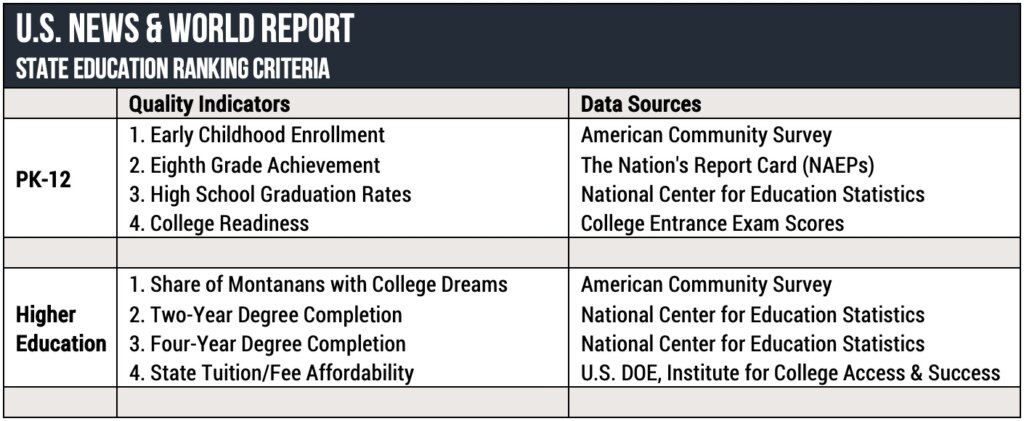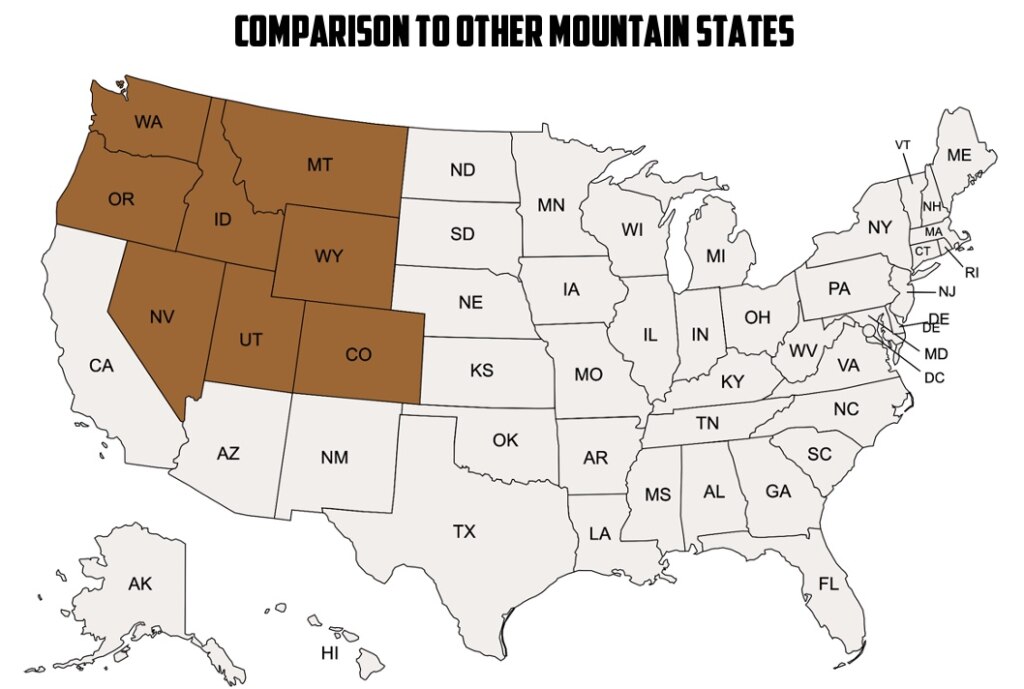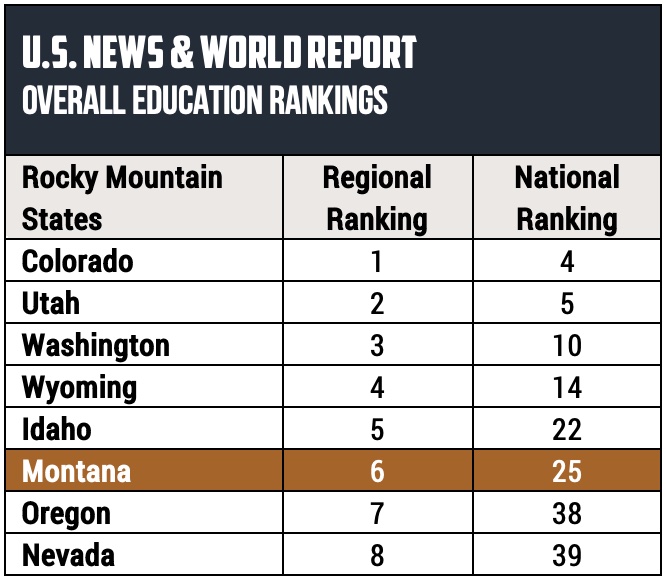
What are the best measures of the quality of education in a state? How do we know if schools at all levels, from kindergarten through college, are doing a good job serving Montanans?

What are the best measures of the quality of education in a state? How do we know if schools at all levels, from kindergarten through college, are doing a good job serving Montanans?
The predominant narrative we often hear from politicians who defend the public education status quo is that Montana’s current system of education works great for students. For instance, in a recent guest column for the Bozeman Daily Chronicle, State Senator Shannon O’Brien of Missoula wrote: “I believe that the work Montanans have done for public education provides a pathway for every child to be their best, for every parent to be engaged in their child’s learning, and for every community member to know what their schools are teaching and with what results.”
But is this political narrative actually true? Over the next year, we are going to publish an article every month on the quality of education in Montana to answer this question. Through these articles, we will examine how well education is working for Montanans of all ages, from early childhood through postsecondary completion, throughout the state.
In this kickoff piece, we want to start with U.S. News & World Report’s rankings of education quality across the 50 states for 4 reasons.
If these reasons aren’t enough, perhaps the most important reason is that U.S. News is independent, not representative of the leadership of Montana’s public education system.
Below, the chart summarizes the indicators that U.S. News uses to rate education across the states. One of the strengths of this approach is that there is a heavy emphasis on preparation for college and career.

Drawing upon the U.S. News rankings, there are two ways to look at the quality of Montana’s education compared to other U.S. states. One is to compare Montana to other states with similar characteristics and populations. The other is to compare Montana to all 49 American states recognizing that there is extraordinary variation from the East Coast to the Midwest to the Rocky Mountain States in this incredibly diverse nation of 332 million people. As a starting point, we thought it most meaningful to compare Montana with the 7 Mountain States around it – Colorado, Idaho, Oregon, Nevada, Utah, Washington, and Wyoming.

After all, these states share a similar territorial history, prevailing values, and geographic region. Because of distance from the eastern seaboard and mountainous topography, these states were some of the last to be settled, organized into American states, and to see the growth of sizable population centers.
When considering this region of the U.S., it is important to factor in differences as well. For example, these 8 states vary greatly in population size, from a low of 576,000 residents in Wyoming to a high of 7.7 million residents in Washington State. There is a striking range in the ethnic and racial composition across the Rocky Mountain states, ranging from a population that is 55% non-white and 45% white in Nevada to a population that is 83% white and 17% non-white in Montana.
Over the past 20 years, it has become apparent just how different the political climate is across the Rocky Mountain States. Colorado, Oregon, and Washington have become predominately blue states known for urban sprawl, social activism, and liberal values. Idaho, Montana, Utah, and Wyoming have remained decidedly red states with a libertarian populous that values freedom and open spaces. By contrast, Nevada is a swing state with one very large population center that heavily influences the state’s politics.
As the chart below illustrates, Montana ranks sixth among the eight states in the Rocky Mountain West on U.S. News’ overall ranking of education quality. That includes ranking Montana below Colorado, Idaho, Utah, Washington, and Wyoming but above Nevada and Oregon. More broadly, U.S. News ranks Montana at #25 among all 50 states.

Why does Montana hold such an unimpressive standing among the Rock Mountain States? Here are several contributing factors:
As these factors make clear, Montana has a long way to go if it wants to be the best state for education quality in the Rocky Mountain West.
With this article, we begin a deeper dive into the state of education to see if Montana deserves to be near the bottom among its neighboring states and middling in the nation.
In future months, we will examine such factors such as Montana’s declining student achievement from 3rd to 8th grade, college preparation and completion levels, and workforce readiness to better understand how education is shaping the future of Montana.
As we seek to examine the quality of Montana education, the comparisons that we draw will not be limited to the Rocky Mountain states. Where appropriate, we will look at states with similar population demographics to draw more insightful comparisons.
To be clear, the purpose is not to overlook all the hard work that Montana educators are doing every day. Rather, we want to figure out what Montanans can do to better support education from preschool through college so that every child, family, and community has access to an education that is among the best in the nation.